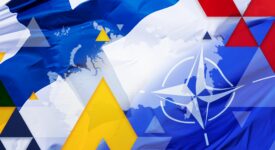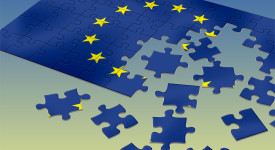Corruption has been a staple of development debates since the mid 1990s. Corruption prevents inclusive economic growth, diverts aid and subverts international development aid. But an equally important consequence of widespread corruption is far less recognised and far less studied: its impact on national and international security. This is why corruption matters to NATO. And yet, the linkages between corruption and insecurity have not become an integral part of key security-related debates and plans. Even when corruption is acknowledged as a strategic challenge, this recognition is rarely translated into specific guidelines and tools that could protect international engagement from corruption risk.
While corruption in any sector can be damaging, corruption in the defence and security forces – those tasked to protect the population and respond to insecurity – is particularly pernicious. In some cases, the effects of corruption are immediately visible, with predatory security forces abusing the populations they were set up to protect. In other cases, the secrecy and confidentiality that often accompanies this sector can hide the effects of corruption until a crisis and a large-scale failure.
Until the 2016 Warsaw Summit, NATO was active in the anti-corruption realm chiefly through its Building Integrity (BI) programme, which focuses on the analysis of corruption risks in defence sectors and helps design national anti-corruption programmes. A step change occurred in Warsaw with the adoption of a BI policy, which goes beyond the initial scope of the programme. The policy makes clear that preventing and countering corruption needs to be incorporated into the Alliance’s key tasks: from collective defence to crisis response to cooperative security. A BI action plan aiming to integrate anti-corruption considerations into NATO’s activities followed shortly after.
Thanks to the BI policy and its capacity-building work, NATO is currently at the forefront of security and defence establishments aiming to mitigate corruption risks. As NATO structures incorporate anti-corruption concerns into their procedures, the next challenge is to ensure that these norms and practices adopted throughout the Alliance are reflected in national defence establishments. The BI policy makes any actions by Allies voluntary, and yet maintaining high standards of defence governance is crucial: among other benefits, it will help ensure that planned increases in Allies’ defence budgets to two per cent of GDP will be well spent. Peer consultations and peer experience is one key way to maintain and improve institutional capacity.
Exercises could also become a vehicle for spreading anti-corruption norms and practices among Allies. For that, however, anti-corruption might need to become an element of NATO’s formal certification requirements. The Alliance would also need to develop a variety of anti-corruption scenarios and train evaluators who can identify challenges and advise on best practice.
The final challenge for NATO’s anti-corruption work is cooperation with other institutions, most notably the European Union. The European Commission’s Directorate General for Neighbourhood and Enlargement Negotiations (DG NEAR) currently sponsors NATO’s BI programme, recognising that defence governance is a key factor in sustainable security and stability. With both organisations facing similar challenges, it certainly makes sense to seek out synergies. Perhaps even more importantly, such measures could help avoid situations in which international interventions inadvertently end up supporting corrupt networks and seeing their resources diverted.
‚Corruption and Conflict: Hand in Glove‘ – Analysis by Karolina MacLachlan – NATO Review.







